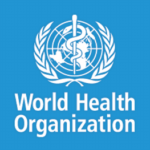Effective Surveillance

Antimicrobial resistance (AMR)
AMR develops when bacteria, fungi or viruses are exposed to antibiotics, antifungals or antivirals. As a result, the antimicrobials become ineffective and infections may persist. In addition, medical interventions including surgery, chemotherapy and stem cell therapy may become impossible.
AMR is considered the biggest global threat of Health and Food Safety.
AMR Insights
For Officers at authorities, ministries, international organisations and NGO’s who wish to prevent the further global spreading of Antimicrobial resistance, AMR Insights offers selected, global information and data, specific education and extensive networking and partnering opportunities.
AMR Insights is for:
- Senior officials and (top) civil servants at national authorities
- Policy Officers at Ministries
- Civil servants at regional authorities
- Senior officials at international organizations
- Senior officials at NGO’s
Latest Topics
-
 12 December 2025
12 December 2025WHO and the European Commission expand partnership to combat antimicrobial resistance
The World Health Organization (WHO) and the European Commission have expanded their strategic partnership to combat antimicrobial resistance (AMR) through a new €3.5 million agreement under the EU4Health programme, strengthening global efforts to address one of the most urgent public-health threats. The funding will support WHO in accelerating research and development of new antibiotics, antifungals […]
Read more... -
 11 December 2025
11 December 2025Transitioning to people-centred antimicrobial resistance surveillance
The authors contend that current global antimicrobial resistance (AMR) surveillance systems, which heavily emphasise reporting aggregated data to international initiatives, underutilise the most important function of blood cultures—as timely, patient-centred diagnostics for suspected sepsis and bloodstream infections—and risk being unsustainable and of limited clinical benefit, particularly in low- and middle-income countries (LMICs); they argue that […]
Read more... -
 09 December 2025
09 December 2025Prevalence of antimicrobial resistance in acute community-acquired urinary tract infections in Sub-Saharan Africa: a systematic review
This systematic review of 41 studies from 19 Sub-Saharan African countries found that antimicrobial resistance in community-acquired urinary tract infections is widespread and poorly documented, with major gaps in available data and inconsistent laboratory methods. Across more than 7,000 bacterial isolates, resistance to trimethoprim–sulfamethoxazole was extremely high in both E. coli (63%) and Klebsiella spp. […]
Read more...
More news related to Effective surveillance





